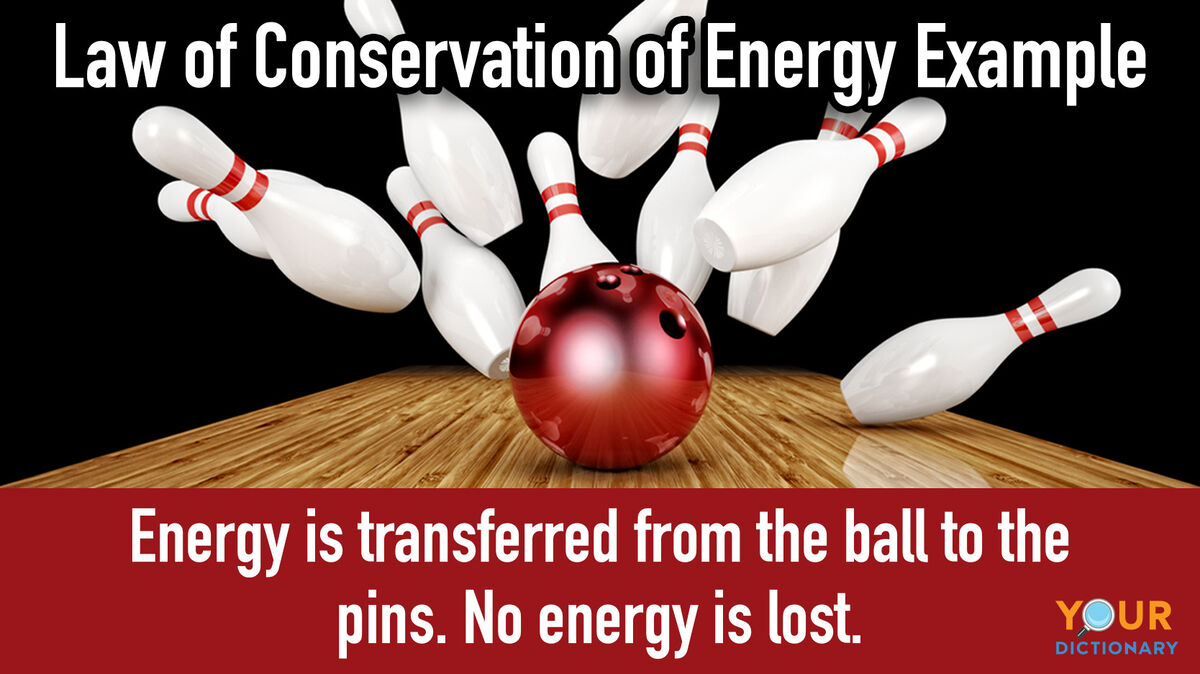
The law of conservation of energy is a law of physics that states that energy cannot be created or destroyed, but only changed from one form into another or transferred from one object to another. This law is taught to middle school and high school students in physical science, physics and chemistry classes.
Understanding the Law of Conservation of Energy
The law of conservation of energy definition emphasizes that energy is not something that can be destroyed or created. It's important to understand what that really means. It would be incorrect to say that the purpose of an experiment would be to make energy, as that would involve an effort to create something that cannot be created. Instead, energy is constantly being transformed so that it can be used. For example, solar panels don't create solar energy. They harness energy from the sun and transform it into another type of energy (electricity).
Everyday Examples: Law of Conservation of Energy
Many examples that illustrate the law of conservation of energy can be seen in everyday life. Review these familiar examples of energy transference to form a clear picture of how the scientific law of conservation of energy impacts daily occurrences.
Conservation of Energy Examples Involving People
Energy can be transferred between people, or from people to objects. These examples all illustrate the law of conservation of energy.
- Kelly ran across the room and bumped into her brother, pushing him to the floor. The kinetic energy she possessed because of her movement was transferred to her brother, causing him to move.
- Two football players collided on the field, and both went flying backward. Energy was transferred from each player to the other, sending them in the opposite direction from which they had been running.
- When you push a book across the table, the energy from your moving arm is transferred from your body to the book, causing the book to move.
- When kicking a football that is sitting on the ground, energy is transferred from the kicker's body to the ball, setting it in motion.
- Sam was rearranging furniture and needed help to push the heavy sofa. His brother came over, and together they were able to push the sofa across the room. As the sofa slid across the wood floor, energy was transferred from the men to the piece of furniture.
- Fingers hitting piano keys transfer energy from the player's hand to the keys.
- Billy hit the punching bag, transferring energy from his arm to the stationary bag.
- Beth hit the wall so hard that she put a hole in it. Energy was transferred from Beth's body to the drywall, causing it to move.
Object-to-Object Conservation of Energy Examples
When two objects collide with each other, energy will transfer between the two objects.
- When playing pool, the cue ball is shot at a stationary eight-ball. The cue ball has energy. When the cue ball hits the eight-ball, the energy transfers from the cue ball to the eight-ball, causing it to move. The cue ball loses energy because the energy it had has been transferred to the eight-ball, so the cue ball slows down.
- When playing the lawn game bocce ball, a small ball is thrown with the intention of hitting larger balls and causing them to move. When a larger ball moves because it was hit by the small ball, energy is transferred from the small ball to the larger one.
- A baseball hits a window in a house, shattering the glass. The energy from the ball was transferred to the glass, making it shatter into pieces and fly in various directions.
- When a moving car hits a parked car and causes the parked car to move, mechanical energy is transferred from the moving car to the parked car.
- Claire threw a ball that hit her mother's vase, knocking it over. Energy was transferred from the moving ball to the stationary vase, causing the vase to move.
- When a car hits a road sign, the sign will fall over. Energy will be transferred from the moving car to the stationary sign, causing the sign to move.
- When a bowling ball knocks over pins that had been standing still, energy is transferred from the ball to the pins. No energy is lost.
- When the car hit the curb it broke apart. Energy from the moving car was transferred to the non-moving cement, causing it to move.
Other Conservation of Energy Examples
Many other situations illustrate how energy can be changed from one form to another or transferred between objects.
- Water can produce electricity. When water falls from the sky, it converts potential energy to kinetic energy. This energy is then used to rotate the turbine of a generator to produce electricity. The potential energy of water in a dam can be turned into kinetic energy.
- Potential energy from oil or gas is a type of chemical energy. Its energy can be harnessed to provide heat for homes, offices or other buildings to keep them warm during the winter.
- Light bulbs transform electrical energy into light, which illuminates dark spaces.
- A cat sitting on the highest branch of a tree has what is known as potential energy. If the cat falls off the branch and falls to the ground, its potential energy is now being converted into kinetic energy.
- The dog ran into the Christmas tree and knocked it over. At the time of impact, energy was transferred from the moving dog to the stationary tree, causing the tree to move.
Learn More About Energy
The law of conservation of energy examples above show how commonplace this physics concept is in everyday life. Now that you're familiar with this scientific law, take the time to learn about different types of energy.